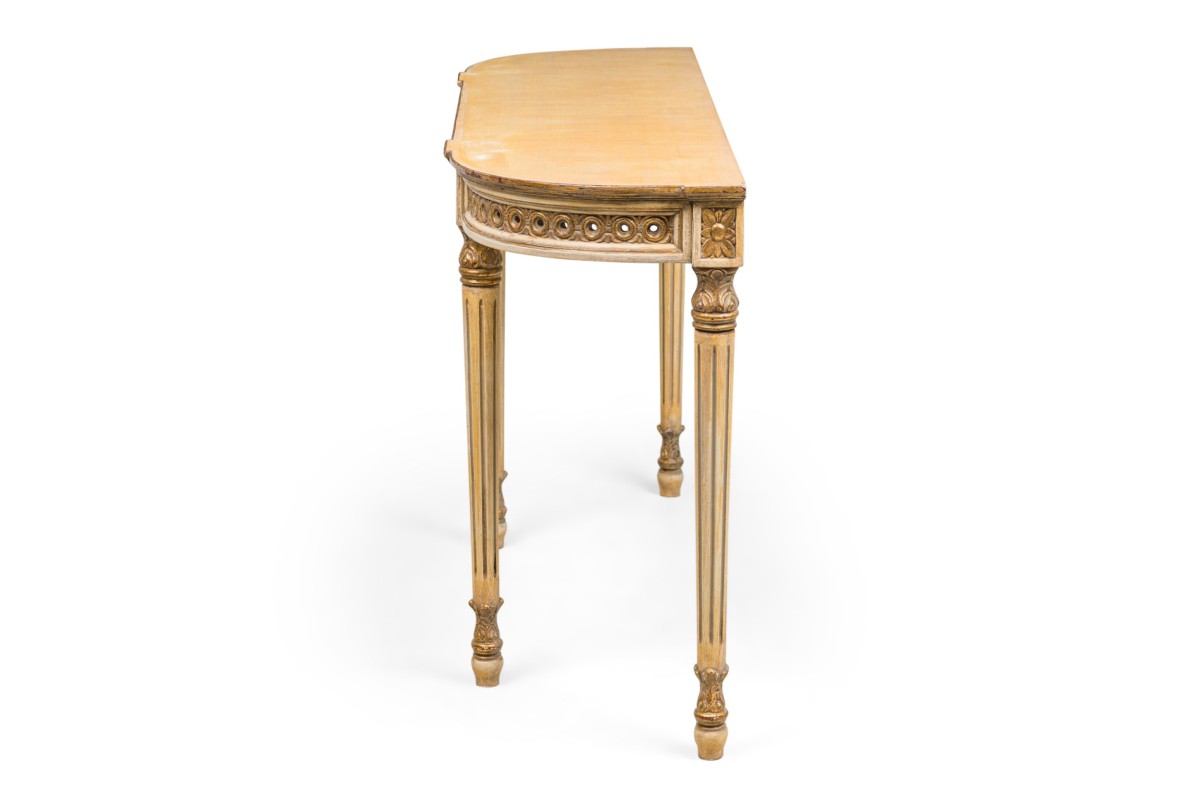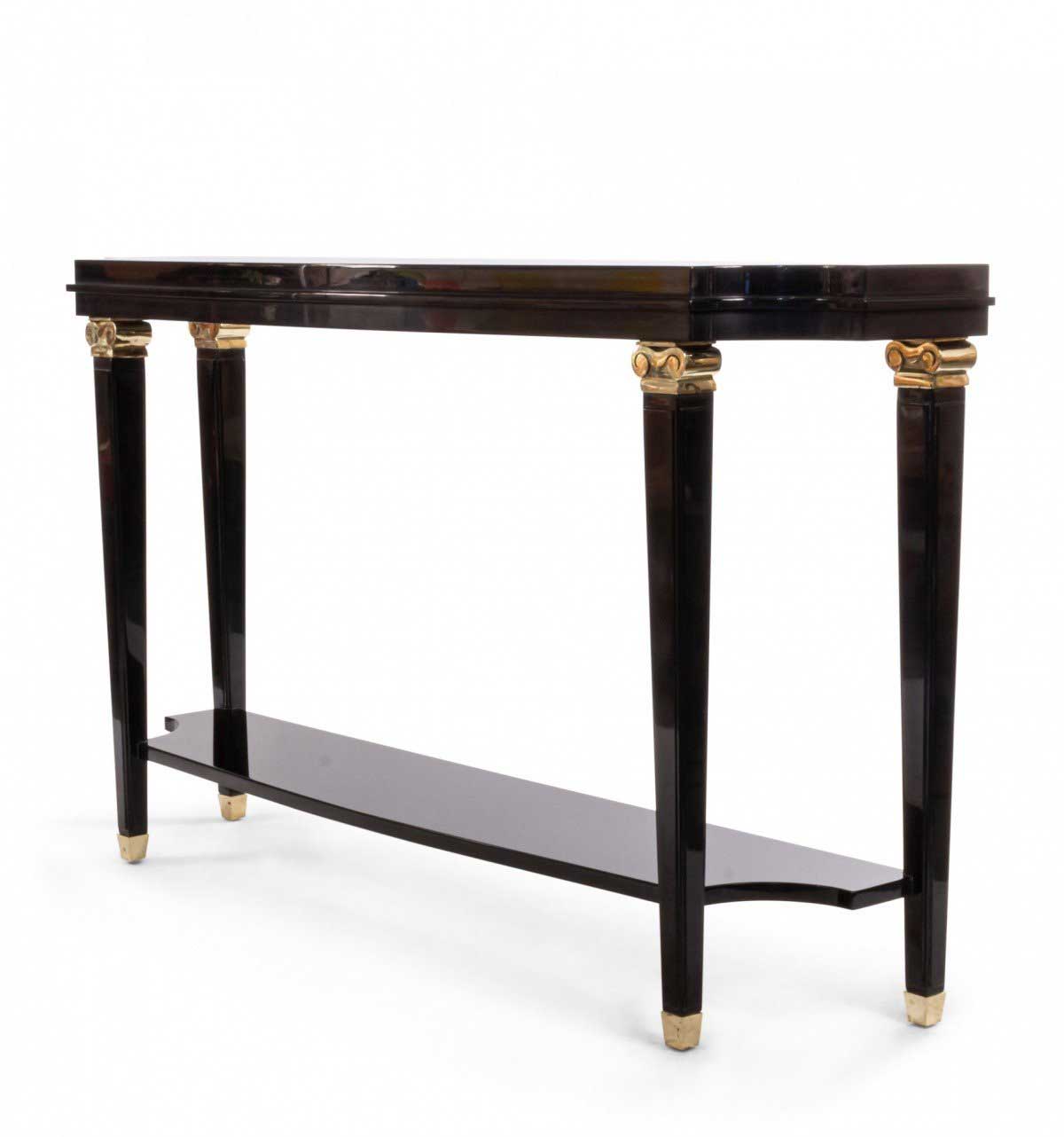X
{{ modalTitle }}
PLEASE FILL IN THE REQUIRED FIELDS.X
X
{{ modalTitle }}
Choose one of the options below.X
ITEM SUCCESSFULLY
ADDED TO PROJECT
Maison Jansen French Neo-Classic White and Parcel Gilt Console Tables with Painted Tops
 Mid-Century
Mid-Century French
French Tables, Dining Room
Tables, Dining Room Console/Wall Tables, Sideboards and Buffets
Console/Wall Tables, Sideboards and Buffets
Newel Gallery
306 East 61st Street, 3rd Floor
NY - 10065
 (212) 758-1970
(212) 758-1970
Maison Jansen French Neo-Classic White and Parcel Gilt Console Tables with Painted Tops

Newel Gallery
306 East 61st Street, 3rd Floor
NY - 10065
 (212) 758-1970
(212) 758-1970
 Tables, Dining Room
Tables, Dining Room Console/Wall Tables, Sideboards and Buffets
Console/Wall Tables, Sideboards and BuffetsConsole table
Starting in the 17th Century, console tables were side table usually fixed to a wall with front legs for support. Frequently the backside of consoles are left undecorated as they are viewed only from the front or sides and were created with the intent of display, often serving as pier table underneath a large mirror. Contemporary references to console tables can also indicate a freestanding relatively tall, rectangular table that is placed against a entrance wall or sofa.
Apron
A structural support placed at right angles to the underside of a shelf, chair seat, or table top to provide additional weight bearing strength and often decorative flourishes.
Neo-classic
Neo-classic refers to the second revival of classic design for interior decoration in the 18th century. This style was inspired by excavations of Pompeii and Herculaneum that begun in 1738. Common motifs include dolphins, lyres, and urns.
Console table
Starting in the 17th Century, console tables were side table usually fixed to a wall with front legs for support. Frequently the backside of consoles are left undecorated as they are viewed only from the front or sides and were created with the intent of display, often serving as pier table underneath a large mirror. Contemporary references to console tables can also indicate a freestanding relatively tall, rectangular table that is placed against a entrance wall or sofa.
Apron
A structural support placed at right angles to the underside of a shelf, chair seat, or table top to provide additional weight bearing strength and often decorative flourishes.
Neo-classic
Neo-classic refers to the second revival of classic design for interior decoration in the 18th century. This style was inspired by excavations of Pompeii and Herculaneum that begun in 1738. Common motifs include dolphins, lyres, and urns.
Console table
Starting in the 17th Century, console tables were side table usually fixed to a wall with front legs for support. Frequently the backside of consoles are left undecorated as they are viewed only from the front or sides and were created with the intent of display, often serving as pier table underneath a large mirror. Contemporary references to console tables can also indicate a freestanding relatively tall, rectangular table that is placed against a entrance wall or sofa.
Apron
A structural support placed at right angles to the underside of a shelf, chair seat, or table top to provide additional weight bearing strength and often decorative flourishes.
Neo-classic
Neo-classic refers to the second revival of classic design for interior decoration in the 18th century. This style was inspired by excavations of Pompeii and Herculaneum that begun in 1738. Common motifs include dolphins, lyres, and urns.

















